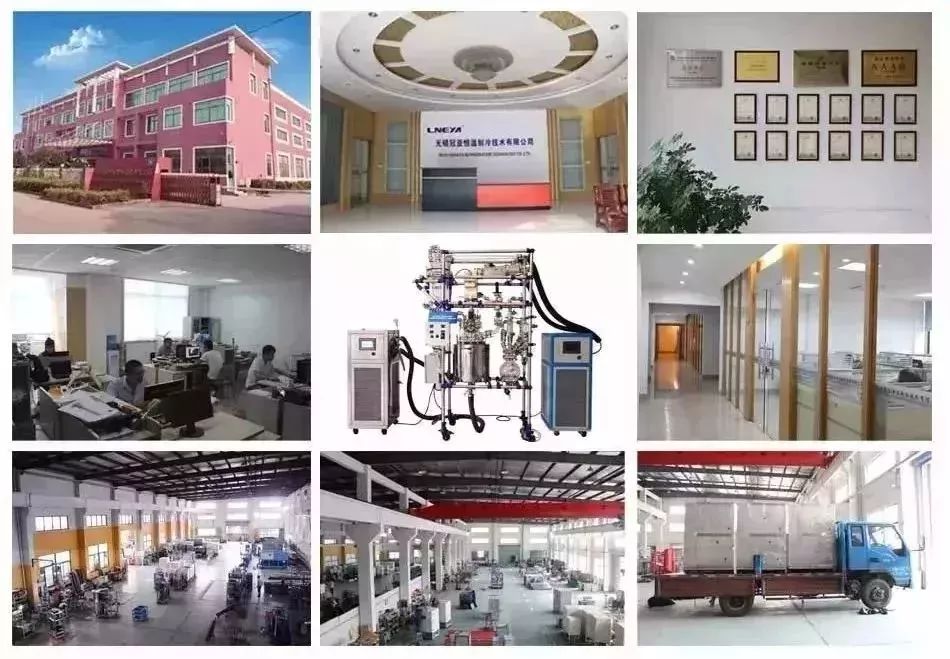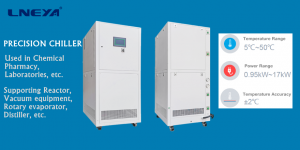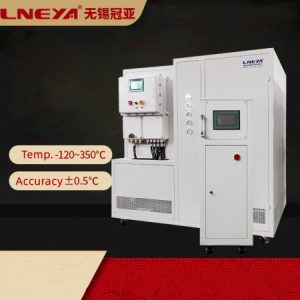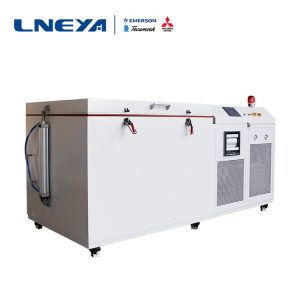The principle of LNEYA chiller
Industrial chillers are commonly used to cool products and machinery for a variety of different applications, including injection molding, tools and die cutting, food and beverage, chemicals, lasers, machine tools, semiconductors and more.
In most process cooling applications, the pumping system circulates cold water or water/glycol solution from the chiller to the process. This cooled fluid removes heat from the process and the warm fluid returns to the cooler. Process water is a means of transferring heat from the process to the cooler.
The process cooler contains a compound called a refrigerant. There are many types of refrigerants and applications depending on the temperature required, but they are all based on the fundamental principle of compression and phase change of the refrigerant from liquid to gas and back to liquid. This process of heating and cooling the refrigerant and changing it from a gas to a liquid and returning again is a refrigeration cycle.

The refrigeration cycle begins with a low pressure liquid/gas mixture entering the evaporator. In the evaporator, heat from the process water or water/glycol solution causes the refrigerant to boil and the refrigerant to change from a low pressure liquid to a low pressure gas. The low pressure gas enters the compressor where it is compressed into a high pressure gas. The high pressure gas enters the condenser, and the ambient air or condenser water removes heat and cools it into a high pressure liquid. The high pressure liquid moves to the expansion valve, controlling the amount of liquid refrigerant entering the evaporator, including restarting the refrigeration cycle.
LNEYA air-cooled cooling equipment uses ambient air to cool and condense hot refrigerant gas back into the liquid. It can be located inside the cooler or can be remotely located outside, but in the end it will block the heat from the cooler to the air. In a water-cooled condenser, water from the cooling tower cools and condenses the refrigerant.
Verwandte Empfehlungen
-
Welche Arten von industriellen Kältemaschinen gibt es?
947When it comes to industrial chillers, everyone probably knows it, but is it clear to you what types of industrial chillers are divided into? What is your first reaction to industrial chillers? Industrial chiller is a kind of cooling equipment that...
Details anzeigen -
Way to Check Problems of the Lubricating Oil System of the Screw Chiller Factory
957Everyone pays more attention to the refrigerant circulation system and the chilled water circulation system of the screw chiller factory operation system. However, lubricating system is often neglected by everyone. In fact, this system of cold wat...
Details anzeigen -
Wie gehen isolierte Wärme-Kälte-Umwälzpumpen mit Ineffizienzen um?
935Heat dissipation is a common problem that causes inefficiencies in isolated heating refrigeration circulators, and it is also a problem that can easily occur. Many isolated heating and refrigeration circulators will have similar problems, so how t...
Details anzeigen -
Welche Auswirkungen hat ein Stromausfall auf eine kryogene Kühlbox mit Flüssigstickstoff?
1191Verschiedene Branchen haben unterschiedliche Temperaturanforderungen an kryogene Flüssigstickstoff-Kryostate. Natürlich gibt es viele Arten von kryogenen Kryostaten. Die Kältemethoden, die in den verschiedenen Branchen verwendet werden, sind unterschiedlich. Wuxi Guanya LNEYA u...
Details anzeigen
 LNEYA Industriekühler Hersteller Lieferant
LNEYA Industriekühler Hersteller Lieferant













